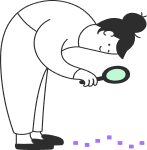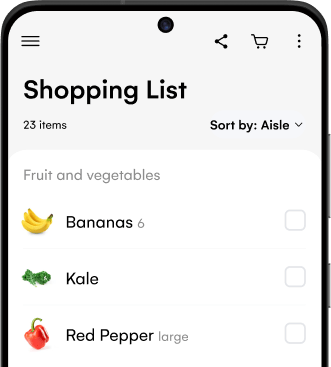Estimated reading time: 5 minutes
You’ve probably heard that you should eat your fruits and veggies and get enough fiber, but do you actually know why? What would happen if you didn’t include it at all? Put simply, you wouldn’t feel great! That’s because eating a high fiber diet has numerous health benefits.
Plan meals together! Share this plan with your family

Let’s take a look at what some of those benefits are.

What is fiber?
Fiber is a type of carbohydrate that cannot be digested by the body, but it is an important part of a healthy diet.
There are two types of fiber: soluble and insoluble. Soluble fiber dissolves in water and can help lower cholesterol and regulate blood sugar levels, while insoluble fiber adds bulk to the stool and can help prevent constipation.
It is recommended that adults consume at least 25-30 grams of fiber per day. However, most people do not get enough fiber in their diet. Especially if you tend to eat processed food instead of fresh. So aside from getting your five a day, what can you do to up your fiber intake? And why should you?
What are the health benefits of a high fiber diet?
One of the main benefits of a high-fiber diet is improved digestive health. Fiber adds bulk to the stool, which can help to prevent constipation and keep the intestines functioning properly. A high-fiber diet can also help to reduce the risk of developing hemorrhoids, a common digestive issue.
In addition to improving digestive health, a high-fiber diet can also help to lower cholesterol levels. Soluble fiber can help to lower low-density lipoprotein (LDL) cholesterol, also known as “bad” cholesterol. High levels of LDL cholesterol can increase the risk of heart disease. By lowering cholesterol levels, a high-fiber diet can help to reduce the risk of heart disease and stroke.
A diet high in fiber can also help to regulate blood sugar levels, making it a good choice for those with diabetes or at risk of developing the disease. Soluble fiber slows down the absorption of sugar into the bloodstream, which can help to prevent blood sugar spikes. This can help to improve glycemic control and reduce the risk of complications associated with diabetes.
Another benefit of a high-fiber diet is that it can help to reduce the risk of certain cancers. Some studies have shown that a diet high in fiber may help to reduce the risk of colon cancer, as well as breast and ovarian cancer.
Dive into our content and find culinary inspiration

Does eating more fiber help with weight loss?
It might not be the main motivation to include more fiber, but you may be interested to know that fiber can aid with weight loss too. In addition to the benefits mentioned above, a high-fiber diet can also help to promote weight loss. Fiber is filling and can help to reduce appetite, making it easier to stick to a calorie-controlled diet. Plenty of high-fiber foods are also low calorie and fill you up while you’re losing weight.
A high-fiber diet can also help to reduce the risk of obesity, a major risk factor for a number of health issues including heart disease and diabetes.

What foods to include in a high fiber diet
You’ve probably guessed that fruits and vegetables tend to be good sources, but it does depend on your favorites. While many fruits and vegetables do contain fiber, the amount can vary widely.
Fruits that are high in fiber include apples, bananas, berries, pears, and oranges. Vegetables that are high in fiber include broccoli, peas, artichokes, and brussels sprouts. Leafy greens, such as spinach and kale, are also high in fiber.
On the other hand, some fruits and vegetables are lower in fiber. These include bananas, watermelon, and cucumbers. However, they’re still a healthy choice and including a wide variety of fruits and vegetables helps to ensure you get adequate vitamins and minerals in your diet too.
On top of fruit and vegetables, you can also get the benefits of a high fiber diet from other sources. Whole grains, such as whole wheat, oats, and brown rice, are good options. Legumes, such as beans, lentils, and chickpeas, are particularly high in fiber.
Know that you can also get fiber from added sources (instead of natural), like fortified cereals.

Time to up your fiber intake?
Overall, a diet high in fiber has numerous health benefits. Getting enough of it in your diet can improve your overall health and well-being.
Just one note: it’s important to drink plenty of water when increasing your fiber intake to help the fiber move through the digestive system properly.
Samsung Food app (which is free to download) is a great resource for finding recipes to fit a high-fiber diet. Not only can you access detailed nutritional information for food and meals, but you can also see health scores and discover recipes you love.



